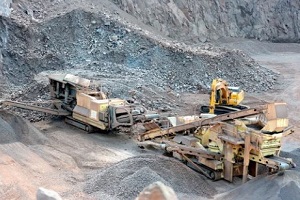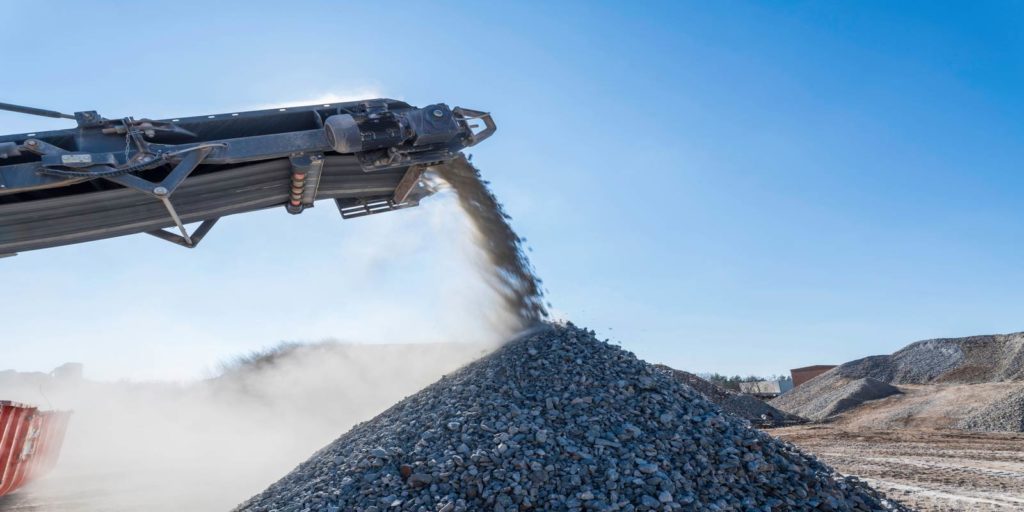When tackling a tough hard rock application, choosing the right crushing equipment can make or break the project. The primary crusher plays an essential role, as it reduces the size of large rocks and prepares them for further processing. Two types of primary crushers in the industry stand out: gyratory and jaw crushers. But when it comes to gyratory vs jaw crusher, which is right? Read on to find out.
Understanding Crushers
Crushers are heavy-duty machines that break up large rocks into more manageable sizes. They play a pivotal role in mining and construction projects, helping break down rocks, minerals, and ores in the primary stage. In hard rock applications they handle the initial size reduction, allowing for efficient secondary crushing and grinding.
A Quick Look At The Gyratory Crusher
The gyratory crusher operates on a gyratory motion, similar to a spinning top. The core components of this crusher include a conical element (mantle) which moves eccentrically within a high-capacity crushing chamber and a concave surface (bowl liner) where the reduction of the material takes place.
When the gyratory crusher is operational, the motion of the mantle causes it to compress against the concave surface. This compression and a concurrent shearing action breaks down the hard rock into smaller fragments. The crushed material exits the crusher at the bottom through an annular discharge opening.
The main strength of the gyratory crusher lies in its ability to handle large feed sizes and achieve high throughput capacities. It also exhibits superior performance when dealing with wet, sticky materials. However, it’s worth noting that the gyratory crusher is generally more expensive to install and maintain due to its complex structure.
An Overview Of The Jaw Crusher
The jaw crusher has two hard-faced heavy plates or jaws and operates on the principle of compression. One jaw is stationary, and the other moves back and forth in a reciprocating motion. As the moving jaw retracts, it creates a space into which the material drops.
As the jaw closes, the material gets compressed between the two jaws, breaking it down to a smaller size. The crushed material is then released at the bottom of the crusher. Jaw crushers are known for their sturdy construction, relatively simple mechanism, and ease of adjustment.
Their design allows them to handle hard, abrasive rocks. However, they might struggle with very large or slabby pieces of rock or when dealing with sticky materials.
Gyratory vs Jaw Crusher: The Battle Of The Crushers In Hard Rock Applications
So, when it comes to the gyratory vs jaw crusher debate in the context of hard rock applications, which one is better? When it comes to performance, both crushers have their pros and cons.
=Gyratory crushers are excellent for high-capacity applications. Their high-speed operation allows them to process large quantities of hard rocks such as granite, basalt, or quartz with efficiency. They also have a greater throw, which helps with finer crushing and allows them to handle slabby material better.
On the other hand, jaw crushers excel in delivering uniform, blocky output, which is beneficial in many construction and road-building applications. Their more straightforward design makes them easier to maintain, and they can often handle very hard materials more cost-effectively, given that their wear parts are typically less expensive to replace.
In terms of maintenance, jaw crushers generally have the upper hand. They have fewer parts, so there are fewer opportunities for things to go wrong, and any necessary repairs or adjustments are typically simpler. However, gyratory crushers can often handle higher throughput and can be better optimized for specific plant configurations.
Gyratory vs Jaw Crusher: Factors To Consider When Making The Choice
Several factors need to be considered when choosing between a gyratory and jaw crusher for your project.
Type & Size Of The Input Material
Consider both the type and size of the rock when choosing between a gyratory and a jaw crusher. Each can handle hard rocks, but for extremely hard materials, the jaw crusher’s robust design may prove more suitable.
Larger rocks generally fare better with gyratory crushers due to their large opening and capacity. Conversely, the jaw crusher excels at handling large, blocky feed, especially in its larger sizes.
Project Scope
It’s also important to consider your project’s scope and long-term requirements. A gyratory crusher might be more suitable if your project demands high-capacity processing. However, a jaw crusher might offer more flexibility for projects with a variable feed or smaller scale.
Financial Issues
 Financial considerations also play a role. Gyratory crushers can be more expensive to install and maintain, but they also typically offer higher throughput, which could be crucial if production volume is a primary concern.
Financial considerations also play a role. Gyratory crushers can be more expensive to install and maintain, but they also typically offer higher throughput, which could be crucial if production volume is a primary concern.
However, jaw crushers generally have lower upfront costs and can be less expensive to maintain, which could benefit operations with tighter budgets.
Make The Right Decision Between a Gyratory vs Jaw Crusher With Mellott’s Expertise
Choosing between a gyratory and a jaw crusher for your hard rock application is a critical decision with considerable implications. However, remember that this choice is only one element of a successful operation. Proper operation and regular maintenance can profoundly impact the efficiency and lifespan of your equipment.
Mellott’s rock crusher experts are here to provide the guidance and support you need to make the right decision based on your unique project requirements. With extensive experience in the rock-crushing industry and a range of the best rock crushers on the market, Mellott can help you streamline your operations.
Contact us today at 888.621.8533 or online, and let us assist you in deciding between a gyratory vs jaw crusher for your hard rock application.

